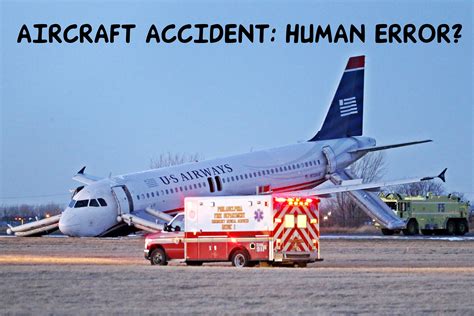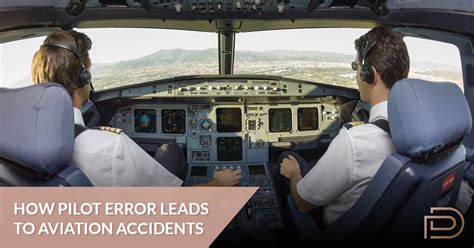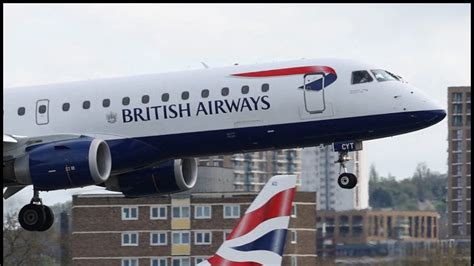
A pilot who previously flew the Lion Air jet that crashed in 2018, killing all 189 people on board, has attributed the disaster to a series of “catastrophic human errors,” exacerbated by a design flaw in the Boeing 737 MAX aircraft’s Maneuvering Characteristics Augmentation System (MCAS).
Jakarta, Indonesia – A former Lion Air pilot who once commanded the ill-fated Boeing 737 MAX that crashed into the Java Sea in October 2018, resulting in the deaths of all 189 passengers and crew, has asserted that the tragedy stemmed from a combination of critical human errors and a flawed aircraft design. Speaking under the condition of anonymity to maintain his current employment, the pilot, who had flown the same aircraft just days before the crash, pointed to a cascade of failures in the cockpit and inadequate training as primary contributing factors, further compounded by the now-infamous MCAS system.
The pilot recounted a harrowing experience on his own flight, revealing that he encountered the same malfunction that ultimately led to the deadly crash. He described a situation where the aircraft’s nose repeatedly pitched downward, triggered by faulty sensor readings that activated the MCAS system. This system, designed to prevent the aircraft from stalling, erroneously interpreted the sensor data as an impending stall and forced the nose down, even when the aircraft was not in danger.
“It was a terrifying experience,” the pilot stated. “The aircraft kept trying to push the nose down, and we had to fight against it. We managed to disable the MCAS system and regain control, but it was a close call. We reported the issue to the maintenance crew, but apparently, the problem was not adequately addressed.”
The pilot emphasized that the crew on the doomed flight likely faced similar challenges, but were unable to effectively diagnose and counteract the malfunction in time. He suggested that the crew’s lack of proper training on the MCAS system, coupled with the inherent complexity of the system itself, contributed to their inability to recover the aircraft.
“The MCAS system was not properly explained to us,” he explained. “We were not trained on how to respond to a malfunction of this kind. In the simulator, we never encountered such a scenario. The training was inadequate, and the system itself was inherently flawed.”
The Lion Air crash, along with another fatal Boeing 737 MAX crash involving Ethiopian Airlines in March 2019, prompted a global grounding of the aircraft and led to intense scrutiny of Boeing’s design and safety practices. Investigations into both crashes revealed that the MCAS system played a significant role, and that Boeing had failed to adequately inform pilots about the system’s existence and potential malfunctions.
The former Lion Air pilot’s account corroborates the findings of these investigations, highlighting the critical role of human factors in the tragedy. He argued that while the MCAS system was undoubtedly a contributing factor, the crash could have been averted if the crew had been properly trained and had been able to effectively troubleshoot the malfunction.
“Ultimately, it comes down to human error,” he said. “The MCAS was a problem, yes, but the crew should have been able to recognize and respond to the malfunction. The lack of training and the complexity of the system made that impossible.”
The pilot further criticized Lion Air’s maintenance practices, suggesting that the airline may have been aware of the recurring sensor issues but failed to take appropriate corrective action. He noted that the same sensor that triggered the MCAS malfunction on his flight had been reported as faulty on previous flights, but had not been properly repaired or replaced.
“There were warning signs,” he stated. “The same sensor had been causing problems for days, but the maintenance crew didn’t seem to take it seriously. They should have grounded the aircraft and fixed the problem, but they didn’t. They prioritized profits over safety, and that’s what ultimately led to the crash.”
The pilot’s revelations provide further insight into the complex chain of events that led to the Lion Air tragedy, underscoring the importance of both robust aircraft design and comprehensive pilot training. The crashes of the Boeing 737 MAX aircraft have served as a stark reminder of the potential consequences of overlooking safety concerns and have prompted significant changes in the aviation industry, including enhanced pilot training requirements and stricter aircraft certification standards.
In the wake of the two Boeing 737 MAX crashes, numerous lawsuits were filed against Boeing by the families of the victims. These lawsuits alleged that Boeing was negligent in the design and development of the MCAS system, and that the company failed to adequately warn pilots about the system’s potential dangers. Boeing ultimately reached settlements with many of the families, but the legal battles continue to highlight the company’s culpability in the tragedies.
The Lion Air crash also led to increased scrutiny of Lion Air’s safety record. The airline had been involved in several previous accidents and incidents, and was known for its aggressive growth strategy and cost-cutting measures. Critics argued that Lion Air’s focus on profits may have compromised safety standards, contributing to the conditions that led to the crash.
The incident has had a lasting impact on the aviation industry, prompting a renewed focus on safety and a greater emphasis on pilot training and aircraft maintenance. Regulators around the world have implemented stricter certification standards for new aircraft, and airlines have invested in enhanced training programs for their pilots. The Boeing 737 MAX has been recertified to fly after Boeing made changes to the MCAS software and improved pilot training. However, the legacy of the Lion Air and Ethiopian Airlines crashes continues to shape the aviation landscape.
The pilot’s statements underscore the importance of a multi-layered approach to aviation safety. While technological advancements can enhance aircraft performance and safety, they must be accompanied by robust training programs and a strong safety culture within airlines. The Lion Air crash serves as a cautionary tale about the dangers of complacency and the importance of prioritizing safety above all else. The combination of a faulty system, inadequate training, and questionable maintenance practices created a perfect storm that ultimately led to the tragic loss of 189 lives. The aviation industry must learn from these mistakes and continue to strive for the highest standards of safety in order to prevent similar tragedies from occurring in the future. The memories of those lost in Flight 610 should serve as a constant reminder of the importance of vigilance and unwavering commitment to safety in the skies.
Further Context and Background
The Boeing 737 MAX, introduced in 2017, was designed to be more fuel-efficient than its predecessor, the Boeing 737 NG. To achieve this, Boeing equipped the MAX with larger, more powerful engines. However, the larger engines altered the aircraft’s aerodynamic characteristics, causing the nose to pitch upwards during certain maneuvers.
To counteract this tendency, Boeing developed the MCAS system. The MCAS system automatically adjusts the aircraft’s horizontal stabilizer to push the nose down, preventing the aircraft from stalling. However, the MCAS system relied on a single angle-of-attack (AOA) sensor to determine whether the aircraft was at risk of stalling. If the AOA sensor malfunctioned and provided incorrect data, the MCAS system could activate unnecessarily and force the nose down, even when the aircraft was not in danger.
In the case of the Lion Air crash, the AOA sensor on the left side of the aircraft malfunctioned, providing erroneous data to the MCAS system. The MCAS system repeatedly activated, pushing the nose down and overwhelming the pilots’ attempts to regain control. The pilots were not adequately trained on the MCAS system and were unaware of how to disable it.
The Ethiopian Airlines crash in March 2019 involved a similar scenario. In that case, the AOA sensor also malfunctioned, triggering the MCAS system and causing the aircraft to crash. The Ethiopian Airlines pilots also struggled to regain control of the aircraft and were unable to disable the MCAS system.
Following the two crashes, Boeing faced intense criticism for its handling of the MCAS system. Critics argued that Boeing had rushed the development of the system and had failed to adequately test it. They also argued that Boeing had downplayed the system’s potential dangers and had failed to provide pilots with sufficient training on how to respond to malfunctions.
Boeing ultimately made changes to the MCAS software, adding redundancies and improving pilot training. The Boeing 737 MAX was recertified to fly in late 2020, after regulators around the world approved the changes. However, the crashes have had a lasting impact on Boeing’s reputation and have raised questions about the company’s safety culture.
The crashes also led to increased scrutiny of the FAA’s aircraft certification process. Critics argued that the FAA had been too lenient in its oversight of Boeing and had allowed the company to self-certify many aspects of the 737 MAX’s design. The FAA has since implemented reforms to its certification process, including increased oversight and more rigorous testing requirements.
The Lion Air and Ethiopian Airlines crashes serve as a stark reminder of the importance of safety in the aviation industry. The crashes highlight the potential consequences of overlooking safety concerns and the importance of prioritizing safety above all else. The aviation industry must learn from these mistakes and continue to strive for the highest standards of safety in order to prevent similar tragedies from occurring in the future.
Detailed Timeline of Events Leading to the Lion Air Crash
To fully understand the circumstances surrounding the Lion Air Flight 610 crash, it’s crucial to examine a detailed timeline of the events leading up to the disaster:
-
October 26, 2018: The Boeing 737 MAX 8, registered as PK-LQP, experienced issues with its airspeed and altitude readings during a flight from Denpasar to Jakarta. The pilots reported the problems to the maintenance crew upon arrival.
-
October 27, 2018: Maintenance was performed on the aircraft, reportedly including work on the angle-of-attack (AOA) sensor. However, the exact nature of the maintenance and the parts replaced remain a subject of debate. The flight following the maintenance experienced similar issues, with the MCAS activating during the flight. The pilots managed to counteract the system and continued the flight. The pilot who spoke anonymously to Yahoo News was at the control on this flight.
-
October 28, 2018: The aircraft operated several flights without any significant reported incidents.
-
October 29, 2018 (Morning): Lion Air Flight 610, a scheduled domestic passenger flight from Soekarno–Hatta International Airport (CGK) in Jakarta to Depati Amir Airport (PGK) in Pangkal Pinang, took off at 6:20 AM local time. The flight was carrying 181 passengers, six cabin crew members, and two pilots.
-
Minutes After Takeoff: Shortly after takeoff, the pilots encountered difficulties controlling the aircraft. The MCAS system activated due to faulty readings from the AOA sensor. The aircraft’s nose repeatedly pitched downward, and the pilots struggled to maintain altitude.
-
Communication with Air Traffic Control: The pilots contacted air traffic control, requesting to return to Jakarta due to a flight control problem.
-
Loss of Contact: At 6:33 AM local time, approximately 13 minutes after takeoff, the aircraft disappeared from radar.
-
The Crash: The Boeing 737 MAX 8 crashed into the Java Sea, approximately 34 nautical miles (63 km; 39 mi) off the coast of Tanjung Pakis, Karawang Regency, West Java. All 189 people on board were killed.
Analysis of Contributing Factors
The Lion Air Flight 610 crash was a complex event with multiple contributing factors. The investigation identified several key elements that played a role in the tragedy:
-
Malfunctioning Angle-of-Attack (AOA) Sensor: The faulty AOA sensor provided incorrect data to the MCAS system, triggering its activation when it was not needed. The lack of redundancy in the AOA sensor system meant that a single point of failure could have catastrophic consequences.
-
Maneuvering Characteristics Augmentation System (MCAS): The MCAS system was designed to prevent the aircraft from stalling, but its design and implementation were flawed. The system relied on a single AOA sensor, and it was capable of overpowering the pilots’ control inputs.
-
Pilot Training: The pilots were not adequately trained on the MCAS system and were unaware of how to disable it. The lack of training was a critical factor in the crash, as the pilots were unable to effectively respond to the malfunction. The training manuals did not contain information about the system or how to disable it manually.
-
Maintenance Issues: There were indications that the aircraft had experienced similar issues on previous flights, but the problems were not adequately addressed by the maintenance crew. The recurring sensor problems should have been a red flag, prompting a more thorough investigation and potential grounding of the aircraft. The reports were not adequately acted upon.
-
Cockpit Resource Management (CRM): The investigation raised concerns about the crew’s communication and coordination in the cockpit. Effective CRM is essential for handling emergencies, and any deficiencies in this area could have hampered the crew’s ability to respond to the malfunction.
-
Regulatory Oversight: The FAA’s oversight of Boeing’s aircraft certification process was also called into question. Critics argued that the FAA had been too lenient in its oversight and had allowed Boeing to self-certify many aspects of the 737 MAX’s design.
-
Lion Air Safety Culture: The crash led to increased scrutiny of Lion Air’s safety record and safety culture. The airline had been involved in several previous accidents and incidents, and was known for its aggressive growth strategy and cost-cutting measures.
The Impact on the Aviation Industry
The Lion Air Flight 610 crash had a profound impact on the aviation industry. It led to:
-
Global Grounding of the Boeing 737 MAX: Following the Ethiopian Airlines crash, regulators around the world grounded the Boeing 737 MAX aircraft. The grounding lasted for nearly two years, as Boeing worked to fix the MCAS software and improve pilot training.
-
Changes to the MCAS System: Boeing made significant changes to the MCAS software, adding redundancies and improving pilot training. The updated MCAS system now relies on data from two AOA sensors, and it is no longer capable of overpowering the pilots’ control inputs.
-
Enhanced Pilot Training: Airlines around the world have invested in enhanced training programs for their pilots, focusing on how to respond to MCAS malfunctions and other emergencies. The simulator training has been modified to include these scenarios.
-
Stricter Aircraft Certification Standards: Regulators have implemented stricter certification standards for new aircraft, including more rigorous testing requirements and increased oversight. This will help prevent design flaws.
-
Increased Scrutiny of Boeing: The crashes have led to increased scrutiny of Boeing’s safety culture and its relationship with regulators. Boeing has taken steps to improve its safety practices, but the company’s reputation has been damaged.
-
Lawsuits and Settlements: Numerous lawsuits have been filed against Boeing by the families of the victims of the Lion Air and Ethiopian Airlines crashes. Boeing has reached settlements with many of the families, but the legal battles continue to highlight the company’s culpability in the tragedies.
The Human Cost
Beyond the technical aspects and industry implications, it is crucial to remember the human cost of the Lion Air Flight 610 crash. The 189 people who lost their lives were not just statistics; they were individuals with families, friends, and dreams. The crash left a void in the lives of their loved ones that can never be filled.
The families of the victims have been tireless advocates for aviation safety, pushing for changes to prevent similar tragedies from occurring in the future. They have shared their stories and demanded accountability from Boeing and the FAA. Their efforts have played a significant role in shaping the changes that have been implemented in the aviation industry.
The Lion Air Flight 610 crash serves as a poignant reminder of the importance of prioritizing safety in the aviation industry. The memories of those lost should serve as a constant motivation to strive for the highest standards of safety in the skies.
Conclusion
The Lion Air Flight 610 crash was a preventable tragedy that resulted from a confluence of factors, including a flawed aircraft design, inadequate pilot training, questionable maintenance practices, and regulatory oversight. The crash exposed serious deficiencies in the aviation industry and prompted significant changes aimed at improving safety. While the Boeing 737 MAX has been recertified to fly, the legacy of the Lion Air and Ethiopian Airlines crashes continues to shape the aviation landscape, underscoring the importance of vigilance and unwavering commitment to safety in the skies. The industry must continue to learn from these mistakes and strive for the highest standards of safety in order to prevent similar tragedies from occurring in the future.
Frequently Asked Questions (FAQ)
-
What was the primary cause of the Lion Air Flight 610 crash?
- The primary cause was a combination of factors, including a malfunctioning angle-of-attack (AOA) sensor, the flawed design of the Maneuvering Characteristics Augmentation System (MCAS), inadequate pilot training on the MCAS, and maintenance issues related to the sensor. The pilot quoted in the article refers to it as “catastrophic human errors” exacerbated by the MCAS flaw.
-
What is the MCAS system, and how did it contribute to the crash?
- MCAS, or Maneuvering Characteristics Augmentation System, is a flight control system designed to prevent the Boeing 737 MAX from stalling. It automatically pushes the aircraft’s nose down if it detects a high angle of attack. In the Lion Air crash, a faulty AOA sensor triggered the MCAS to activate unnecessarily, repeatedly forcing the nose down, overwhelming the pilots, who lacked sufficient training on how to disable the system.
-
What role did pilot training play in the Lion Air crash?
- Pilot training was a critical factor. The pilots were not adequately trained on the MCAS system and were unaware of how to disable it in the event of a malfunction. The training manuals lacked information about the system and how to manually override it, leaving the pilots unprepared to deal with the situation they faced.
-
What changes were made to the Boeing 737 MAX after the Lion Air and Ethiopian Airlines crashes?
- Boeing made several changes to the MCAS software, including adding redundancies by using data from two AOA sensors instead of one, limiting the MCAS’s ability to repeatedly activate, and making it easier for pilots to override the system. Airlines also implemented enhanced pilot training programs focusing on MCAS malfunctions and other emergencies.
-
What is the current status of the Boeing 737 MAX aircraft?
- The Boeing 737 MAX has been recertified to fly by aviation regulators around the world after Boeing made changes to the MCAS software and improved pilot training. However, the legacy of the Lion Air and Ethiopian Airlines crashes continues to shape the aviation industry, and the aircraft remains under close scrutiny.









